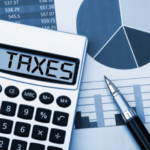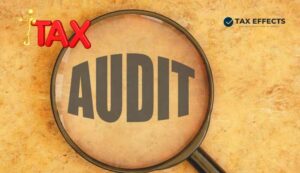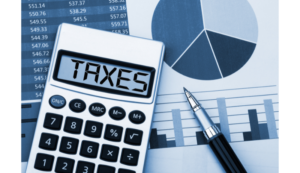One of the major reasons why investors fail to secure themselves financially is because they are unaware of the things that should be done for it. Investors do what they feel is the right thing to do but that might not always be sufficient. Hence, it is essential to know what are the key components that they need to focus on while creating a road map for their financial well being.
It is essential to point out that there are 5 important points to one’s complete financial picture. These are saving, investing, financial protection, tax planning & retirement planning.
(1) Savings –
You need to keep money aside as savings to cover any sudden financial need such as emergency fund. The need for sudden money can come anytime. However, such emergency events can be dealt with if you have enough savings to cover the need. As a thumb rule, the emergency fund needs should be at least 6 to 8 months of your expenses.
Fixed Deposit (FD), Debt instruments like liquid funds are excellent options for parking the money meant for emergency needs. Reason to invest in FD, liquid fund for emergency needs are:
a) liquid funds, FD give slightly better returns than your savings account, even though there is no guaranteed return on liquid funds.
b) these funds are highly liquid, hence you can withdraw the money anytime.
c) they carry negligible credit & interest risk & hence your money is safe.
(2) Investing
Investing is as important as savings to grow money so that you can achieve what you aspire. If you only save your money but do not invest in the desire investment product then your hard earned save money will get diluted due to the effect of inflation.
We often confuse investing with saving or consider them to be synonymous. While saving is about setting money aside, investing is putting your money in purchasing assets like – stock, bond, mutual funds etc. – in order to make your money grow.
In terms of investment, mutual funds are an excellent investment option if it is done right. However, while investing in mutual funds it is essential to be mindful about choosing the right fund for your investment, otherwise it might turn counterproductive. Hence it is essential to make your investment as per your investment requirement & horizon.
Different funds one should pick as per their financial goals –
a) Short term goals – The goals that need to be achieved within 3 years are short term goals. From saving for a trip to saving for a phone, there are multiple things for which one needs to arrange funds within this timeframe. Investment option will be liquid fund, ultra short-term fund.
b) Mid-term goals – If you have set a goal for yourself that needs to be achieved within 3 to 5 years, for example – down payment for a house, any foreign trip it can be termed as mid-term goals. Investment option will be ELSS fund, Hybrid fund.
c) Long-term goals – Events like retirement, children education, their marriage etc., i.e. the goals for which the timeframe is minimum of 5-8 years are termed as long term goals. Investment option will be Large Cap fund, Flexi-Cap fund, NPS (for retirement).
(3) Financial Protection
We might have several dreams in life & create investment plans to turn those dreams into reality. But unless we protect them with a safety net, the same can turn into a liability. That safety net is insurance. Type of Insurance one should be aware of:
a) Term Insurance – It is a kind of life insurance that ensures that your family or dependents do not have to go through financial hardship if you die early. As compared to other health insurance products, the sum assured for term insurance is higher as against the premium amount.
b) Health Insurance – Having health insurance ensures that you do not have to pay from your pocket in case you or any of your family members have taken ill. Health insurance covers all costs for treatment of the insured like hospitalization, medication, pre & post hospitalization expenses etc. You can also opt for critical insurance along with your basic health policy. In case you are diagnosed with one of the critical illnesses mentioned in your policy, the insurance company will pay you the sum assured.
(4) Tax Planning
With proper tax planning, i.e. making adequate expenditure/investment, you can bring down your taxable income, eventually saving a lot of money every year. With the right kind of investment/purchase we can reduce our taxable income to a certain extent. Various sections for reducing/deducting taxes are:
a) Section 80C – Under this section, you can claim deduction up to Rs 1.5 lakh for making various investments and expenditures. Some of the prominent tax saving instruments under this bucket are EPF, PPF, NSC, NPS, ULIPs, children’s tuition fee, life insurance premium, 5-year tax saving FD, ELSS, Senior Citizen tax saving instrument, Sukanya Samriddhi Yojana, home loan principal amount.
b) Section 80D – You can claim deduction under Section 80D, for the premium amount you pay for your & your family’s health insurance policy. Premium for self, spouse & children can be claimed upto Rs 25,000 & for parents of age 60 years or above can be claimed upto Rs 50,000.
c) Section 80CCD (1B) – Under this section, you can claim deduction up to Rs 50,000 for making investment in NPS.
d) Further, investing in shares & equity oriented mutual fund attract lowest rate of tax if held for long term (i.e. more than 1 year), long term capital gain (LTCG) tax under section 112A is only 10% without indexation + 4% cess. A threshold exemption of Rs 1 lakh capital gain in each financial year is allowed as exempt. However, short term capital gain (STCG) (held for < 1 year) is taxable @ 15% + 4% cess u/s 111A.
(5) Retirement Planning
Finally, retirement is one of the most crucial life stages & it can be as blissful or as miserable depending upon how you have planned for it. It holds true for financial planning too. Now, planning finances for retirement is a two-step process.
First is, saving for retirement & second is, generating income from your assets during retirement.
a) Building a retirement corpus – Saving for retirement is crucial for two reasons majorly – loss of income and increased life expectancy. Let’s assume that you retire at 60 and live upto 85. How do you plan to fund your expenses for 25 years after retirement, at a time when you do not have any steady income. Plus considering inflation, i.e. the rise in prices of goods and services for regular use, your expenses will be much higher after retirement than it is today.
For example – if your monthly expenses are Rs 35,000 right now, it would be Rs 80,000 per month in 20 years, considering you would want to maintain similar living standards. Now, building a fund as large as a retirement corpus is a lifelong process. So, the earlier you start saving towards, the better it is. Investment option will be Employee Provident Fund (EPF), PPF, NPS & Mutual Fund.
b) Generating income during retirement – As much as it is important to ensure that you are saving enough for your retirement while you are working, it is equally important that you channelize that corpus correctly after retirement. Making the right investments will ensure that you have a steady income as long as you live. Investment option will be Systematic Transfer Plan (STP) withdrawal/transfer from mutual fund, Life Insurance Annuity & Rental Income.
Happy Readings!
Disclaimer: The information contained in this website is provided for informational purposes only, and should not be construed as legal/official advice on any matter. All the instructions, references, content, or documents are for educational purposes only and do not constitute legal advice. We do not accept any liabilities whatsoever for any losses caused directly or indirectly by the use/reliance of any information contained in this article or for any conclusion of the information.









